![]()
![]()
![]()
Use LEFT and RIGHT arrow keys to navigate between flashcards;
Use UP and DOWN arrow keys to flip the card;
H to show hint;
A reads text to speech;
71 Cards in this Set
- Front
- Back
|
Papavaraceae
4 petals and many stamen Chelodonium |
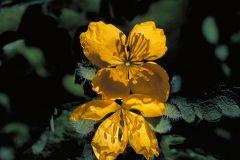
Identify the family and name the key characteristics
Identify the genus and species if known |
|
|
Papavaraceae
Wrinkled petals, many stamen, and compound pistil |

Identify the family and key characteristics.
Identify the genus and species if known. |
|
|
Papavaraceae
Poricidal capsule Papaver |
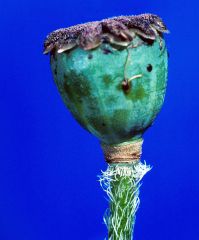
Identify the family and key characteristics.
Identify the genus and species if known. |
|
|
Papavaraceae
Dissected leaves, many stamen, 4 petals Stylophorum |
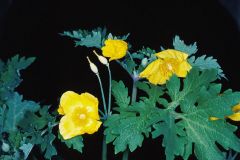
Identify the family and key characteristics.
Identify the genus and species if known. |
|
|
Papavaraceae
Fused carpel and parietal placentation. Stylophorum |

Identify the family and the key characteristics.
Identify the genus and species if known. |
|
|
Papavaraceae
Zygomorphic symetry and necter spur. Corydalis |
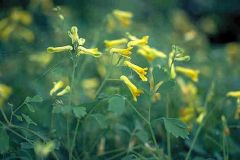
Identify the family and the key characteristics.
Identify the genus and species if known. |
|
|
Papavaraceae
Outer petals with nectur spurs and inner petals enclosing stigma Dicentra |

Identify the family and the key characteristics.
Identify the genus and species if known. |
|
|
Papavaraceae
Outer petals nectar spurs and inner petals enclosing stigma |
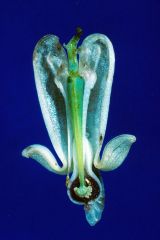
Identify the family and the key characteristics.
Identify the genus and species if known. |
|
|
List useful field characteristics of Papavaraceae
|
- herbs with milky sap (can be colored)
- leaves simple often lobed or dissected - flowers actinomorphic (Papaveroideae) or zygomorphic (Fumarioideae) - 2 deciduous sepals, 4 petals often wrinkled - Stamens numerous (Papaveroideae) OR 6 and diadelphous (Fumarioideae) - Fruit a capsule |
|
|
Name the three subfamilies of Papavaraceae
|
Papavaroideae
Fumarioideae Pteridophylliodeae |
|
|
Magnoliaceae.
Showy flower. Many parts spirally arranged on elongate receptacle. |
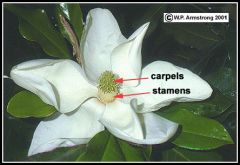
Identify the family and key characteristics.
Identify the genus and species if known. |
|
|
Magnoliaceae
Fruit developing from on carpel |

Identify the family and key characteristics.
Identify the genus and species if known. |
|
|
Magnoliaceae
Many laminar stamens. Liriodendron - tulip tree |

Identify the family and key characteristics.
Identify the genus and species if known. |
|
|
Magnoliaceae
Spiral arrangement, large showy flowers. |

Identify the family and key characteristics.
Identify the genus and species if known. |
|
|
Magnoliaceae
Large. Simpe leaves, entire margins, spiral arrangement, many simple pistals |

Identify the family and key characteristics.
Identify the genus and species if known. |
|
|
Name key field characteristics of Magnoliaceae
|
Magnoliaceae
trees & shrubs flowers large and showy floral parts numerous, separate, spirally arranged elongate receptacle |
|
|
List key field characteristics for ranunculaceae
|
usually herbs
leaves simple and deeply lobed or compound stamens usually many apocarpous gynoecium (2 to many) superior ovary Sepals and Petals 3+, petals can be absent |
|
|
Ranunuculaceae
Many stamens, highly divided leaves Aconitum |

Identify the family and key characteristics.
Identify the genus and species if known. |
|
|
Ranunculaceae
Many stamens, no petals, divided leaves |

Identify the family and key characteristics.
Identify the genus and species if known. |
|
|
Ranunculuaceae
Aquigelia |

Identify the family and key characteristics.
Identify the genus and species if known. |
|
|
Ranunculaceae
|
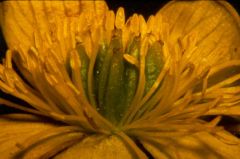
Identify the family and key characteristics.
Identify the genus and species if known. |
|
|
Ranunculaceae
Many stamens multiple simple pistals Caltha |

Identify the family and key characteristics.
Identify the genus and species if known. |
|
|
Ranunculaceae
Fruit follicle Caltha |

Identify the family and key characteristics.
Identify the genus and species if known. |
|
|
Ranunculacea
Cultha |
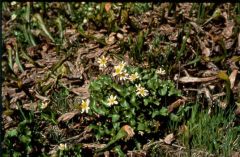
Identify the family and key characteristics.
Identify the genus and species if known. |
|
|
Ranunculaceae
Many stamens and pistals Helleborus |

Identify the family and key characteristics.
Identify the genus and species if known. |
|
|
Ranunculaceae
Trollius |

Identify the family and key characteristics.
Identify the genus and species if known. |
|
|
Ranunuculus
Clematis |

Identify the family and key characteristics.
Identify the genus and species if known. |
|
|
Araceae.
Colorful spathe Spadix with flowers Lysichiton |

Identify the family and key characteristics.
Identify the genus and species if known. |
|
|
Araceae
Fruit on end of spadix Dracunulus |

Identify the family and key characteristics.
Identify the genus and species if known. |
|
|
Araceae
Spadix inside Spathe. Infloursence at the bottom Arum |

Identify the family and key characteristics.
Identify the genus and species if known. |
|
|
Characteristics of Typhaceae
|
1) aquatic herbs
2) lvs simple, alternate, 2-ranked, linear 3) inflorescence a dense spike of male flowers at tip of shoot and female flowers at base of shoot - monoecious 4) flowers: - perianth of bract-like tepals or bristles - 1-8 stamens - 3 fused carpels, one ovule per carpel, and 2 carpels aborting --> single-seeded follicle or drupe - superior ovary |
|
|
Typhaceae
Seperate male and female flowers, monecious, reduced bract like tepals. 3 connate carpels. |

Identify family and key characteristics. Identify genes and species if known.
|
|
|
Typhaceae
Developed fruit - drupe with dry spony flesh |

Identify family and key characteristics. Identify genus and species if known.
|
|
|
Typhaceae
Separate male and female flowers, monecious Tyhpha |

Identify family and key characteristics. Identify genus and species if known.
|
|
|
Typhaceae
Fruit falling apart as winter progresses. Typha |

Identify family and key characteristics. Identify genus and species if known.
|
|
|
Characteristic of Juncaceae
|
1) herbs (aquatic or terrestrial)
2) stems typically round and solid 3) lvs basal, 3-ranked, leaf sheaths open or closed 4) flowers - actinomorphic - 3-parted (wind pollinated, but look just like little lily flowers) -ovary of 3 fused carpels, usually with many ovules, superior |
|
|
Useful field characteristics of Juncaceae
|
herbs with round, usually solid stems
leaves basal, 3ranked, with open or closed sheaths tepals 6 stamens 3 or 6; carpels 3, connate capsule |
|
|
Juncaceae
Round solid stems, highly branched flowers. Juncus |

Identify family and key characteristics. Identify genus and species if known.
|
|
|
Juncacea.
Branched inflorescence, 3-6 tepals, 3-6 stamen and 3 fused carpels |

Identify family and key characteristics. Identify genus and species if known.
|
|
|
Juncaceae
6 tepals, 3 fused carpels, superior ovary |
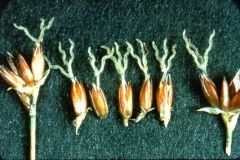
Identify family and key characteristics. Identify genus and species if known.
|
|
|
Characteristics of Cyperaceae
|
1) herbs (many aquatic, but terrestrial, too)
2) stems triangular, solid or hollow 3) lvs 3-ranked; sheath closed - ligule - flap of tissue at junction of blade and sheath, present only in Carex 4) Inflorescence a spikelet of many small flowers (found also in grasses - Poaceae) Each flower subtended by a bract and one empty bract at base of spikelet 5) Flowers - bisexual or unisexual (then usually monoecious) - technically actinomorphic - perianth absent or reduced to hairs or small bracts - usually 3 stamens; sometimes only 1 or 2 - ovary of 2-3 fused carpels, but always reduced to contain a single ovule - fruit an achene - ovary surrounded by a structure called a perigynium in Carex and related genera |
|
|
Field characteristics of Cyperaceae
|
herbs
stems typically triangular,sometimes round leaves basal or cauline, 3-ranked, with closed sheaths inflorescence a spikelet perianth of bristles or absent achene |
|
|
Cyperaceae
Flowers born on spiklets, monecious in this case, subtend by bracts, one bracts at base of spiklet. |
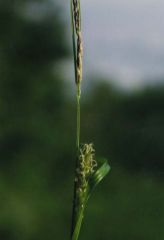
Identify family and key characteristics. Identify genus and species if known.
|
|
|
Cyperaceae
3 ranked leaves. Carex |

Identify family and key characteristics. Identify genus and species if known.
|
|
|
Cyperaceae
Monecious. Spiklets. Carex |

Identify family and key characteristics. Identify genus and species if known.
|
|
|
Cyperaceae
Achene fruits |

Identify family and key characteristics. Identify genus and species if known.
|
|
|
Characteristics of Poaceae
|
herbs, though bamboo achieves tree-like proportions
2) stems circular and usually hollow but sometimes solid 3) lvs 2-ranked; leaf sheaths open (overlapping), ligule present at junction of sheath and blade 4) growth by intercalary meristem, which is at nodes rather than at tip of stem. This allows regeneration when tip is cut, as in grazing or mowing of prairies/lawns. Hypotheses of coevolution of grazers and grassland 5) Inflorescence a spikelet of many small flowers (as in sedges) - Sometimes only one floret per spikelet - Each spikelet subtended by two empty bracts called glumes - Each individual flower (floret) enclosed by two bracts: - lemma - bract at base of individual floret - palea - bract that faces the lemma thereby enclosing the floret 6) Flowers (individual flowers called florets) - technically zygomorphic - lodicules - very reduced perianth; little more than swollen bit of tissue - ovary of 2-3 fused carpels, but reduced to a single locule with one ovule - superior ovary |
|
|
Key field characteristics of Poaceae
|
herbs with round, usually hollow stems
leaves basal or cauline, 2ranked, usually with open sheaths ligule between leaf sheath and leaf blade inflorescence a spikelet with 1 to many florets glumes, lemmas, paleas, lodicules caryopsis (grain) |
|
|
Poaceae
Circular stems, 2 ranked, spiklets of flowers, grow from intercalcy meristem. |

Identify family and key characteristics. Identify genus and species if known.
|
|
|
Poaceae
Each spiklet subtend by single bract, and each floret surrounded by two bracts or glumes - the lemma and palea. |

Identify family and key characteristics. Identify genus and species if known.
|
|
|
Poaceae
Bract, glumes, 1-6 stamen, 2-3 fused carpels plumose stigma. Absent perianth |
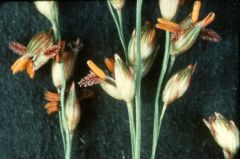
Identify family and key characteristics. Identify genus and species if known.
|
|
|
Compare rushes, sedges, and grasses
|

see above
|
|
|
Characteristics of Araceae
|
2) lvs simple or compound; broad and petiolate (‘pseudo-laminae’ not same as dicot
blade 3) calcium oxalate crystals usually present 4) Inflorescence consisting of - spathe - bract (often colorful) surrounding the flowers - spadix - axis on which the flowers are borne - often with a sterile extension above called an ‘appendix’ 5) Flowers - unisexual (sometimes bisexual) - monoecious or dioecious; if monoecious, male fls above, female fls below - tepals 4-6, or 0,scale-like, or fused in a cup, inconspicuous - superior or inferior ovary - fetid odor (stinks!) |
|
|
Useful field characteristics of araceae
|
mostly terrestrial herbs
watery or milky sap calcium oxalate crystals spathe and spadix flowers often with fetid odor |
|
|
Characteristics of Liliaceae
|
1) herbs
2) stems often modified as underground rhizomes, corms, or bulbs 3) Flowers - 3-parted all the way (2 whorls of stamens) - distinct sepals and petals or just tepals - ovary superior or inferior - this is sometimes used to segregate some families |
|
|
Useful field characteristics of Liliaceae
|
usually herbs, often scapose
stems often modified as rhizomes, bulbs or corms flowers actinomorphic perianth usually undifferentiated 6 tepals (or 3 sepals and 3 petals), 6 stamens, 3 carpels ovary superior or inferior capsule or berry |
|
|
Liliaceae
6 tepals and 6 stamen, 3 fused carpels (3 parted). |

Identify family and key characteristics. Identify genus and species if known
|
|
|
Liliaceae
Superior ovary, 3 parted. Lilium |

Identify family and key characteristics. Identify genus and species if known.
|
|
|
Liliaceae
3 sepals, 3 petals, 6 stamen Trillium. |

Identify family and key characteristics. Identify genus and species if known
|
|
|
Characteristics of the Iridaceae
|
1) herbs, aquatic or terrestrial
2) underground stems as rhizomes, bulbs or corms 3) lvs mostly basal and linear, 2-ranked and ‘equitant’ (overlapping in 2 ranks) 4) inflorescence often subtended by a spathe-like bract 5) Flowers - actinomorphic or zygomorphic - distinct sepals and petals or just tepals – 6 total - stamens 3 - ovary of 3 fused carpels, inferior; fruit a capsule - 3 petaloid styles in Iris winged and showy; flap of tissue covers the stigmatic surface, so that an insect backing out of the flower will not transfer pollen from the stamen to its own stigma. In Iris,the stamens are in line with the petaloid style. |
|
|
Useful field characteristics of the Iridaceae
|
herbs
flowers actinomorphic or zygomorphic perianth undifferentiated or differentiated 6 tepals (or 3 sepals and 3 petals), 3 stamens, 3 carpels styles sometimes winged and petaloid ovary inferior capsule |
|
|
Iridaceae
6Tepal, 3 stamen, 3 fused carpels, stamen petaloid. |

Identify family and key characteristics. Identify genus and species if known.
|
|
|
Iridaceae
Petaloid stamen Iris |

Identify family and key characteristics. Identify genus and species if known.
|
|
|
Iridaceae
Capsule fruit Iris |

Identify family and key characteristics. Identify genus and species if known.
|
|
|
Iridaceae
6 tepals, 3 stamen, 3 fused carpels Sisyrinchium |

Identify family and key characteristics. Identify genus and species if known.
|
|
|
Characteristics of Orchidaceae
|
1) herbs, terrestrial or epiphytic
Epiphytic plants - plants that are supported by some structure other than their own stem. (usually other plants) - very common in the tropical wet forests - epiphytic habitat often imposes serious drought conditions on plants - modifications for drought resistance: - sunken stomata - thick waxy cuticle - absorbent scales OR swollen stems or aerial roots for water retention 2) swollen stems - ‘pseudobulbs’ 3) thickened aerial roots covered with a multiple-layered epidermis called a ‘velamen’ 4) Flowers - bracteate - often resupinate (twisted 180o in development) - one petal modified as a ‘labellum’ (lower lip) - pollen aggregated into pollinia (1 or 2 stamens) - style, stigma, and stamens fused to form the column - The anther forms the tip of the column, with the stigmatic surface lower down 5) seeds minute, without endosperm, require a fungal relationship to germinate successfully |
|
|
Useful field characteristics of orchidaceae
|
terrestrial or epiphytic herbs
strongly mycotrophic flowers zygomorphic 3 sepals, 3 petals, 12 stamens, 3 carpels labellum, column, pollinia ovary inferior capsule |
|
|
Orchidaceae
Enlarged lower petal - labellum. Cypripedium |

Identify family and key characteristics. Identify genus and species if known.
|
|
|
Orchidaceae
Zygomorphic, 3 sepals and 3 petals, 12 stamens. Calypso |

Identify family and key characteristics. Identify genus and species if known.
|
|
|
Orchidaceae.
Large inferior ovary Coralorhiza |

Identify species and key characteristics. Identify genus and species if known.
|
|
|
Orchidaceae
Capsule fruit with minute seeds. |

Identify family and key characteristics. Identify genus and species if known.
|

